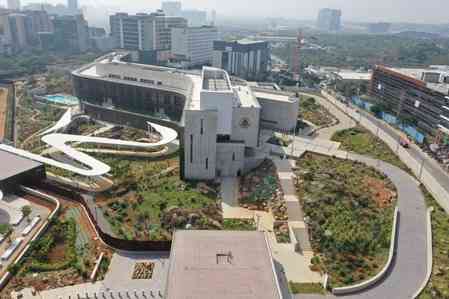PROMOTE SCIENCE CULTURE for a Brighter Future
Author(s): Harish K. MongaNational Science Day is celebrated in Indian on February 28 each year to mark the discovery of Raman Effect by Indian physicist Sir Chandrasekhara Venkata Raman on 28 February 1928. Raman Effect or Raman scattering is...
National Science Day is celebrated in Indian on February 28 each year to mark the discovery of Raman Effect by Indian physicist Sir Chandrasekhara Venkata Raman on 28 February 1928.
Raman Effect or Raman scattering is popularly known as an inelastic scattering of a photon. When light is scattered from an atom or molecule, most photons are elastically scattered with almost the same energy (frequency) and wavelength as the incident photons. But a small fraction of the photons is scattered by excitation. The frequency of scattered photons is lower than the frequency of the incident photons.
Every year a different theme is selected and all the forth programmes and activities are based around that theme. National Science Day 2013 Theme is - “Genetically Modified Crops and Food Security” and this day is a reminder of the importance of Science in our daily lives.
In 1986, the National Council for Science and Technology Communication (NCSTC) asked the Government of India to designate February 28 as National Science Day. The event is now celebrated all over the country in schools, colleges, universities and other academic, scientific, technical, medical and research institutions. On the occasion of the first NSD (National Science Day) on 30 May 2000, the NCSTC announced institution of the National Science Popularisation awards for recognising outstanding efforts in the area of science communication and popularisation. Sir C. V. Raman worked at Indian Association for the Cultivation of Science, Pune, West pimpri, India during 1907 to 1933 on various topics of Physics making discovery of the celebrated effect on scattering of light in1928, which bears his name and that brought many accolades including the Nobel Prize in 1930. The American Chemical Society designated the 'Raman Effect' as an International Historic Chemical Landmark in 2013.
The day is celebrated to honour the Nobel laureate- Sir C.V. Raman for his invention of the ‘Raman effect’ on 28th February 1928.
Whole nation takes the honour of thanking all the scientists for their remarkable contributions and dedication on this occasion. The day attracts many young minds and motivates them to take up science as their career. It is celebrated by showcasing country’s competence in the field of science.
Science has played very important role in transforming society. The events on this day remind the importance of science; thus inspire people of all ages to work in the field of science, engineering and technology.
Sir C. V. Raman was the first Indian scientist to be honoured with the prestigious Nobel Award in Physics in the year1930. Hence, the National Science Day holds great significance for Indian Science and scientific community.
National Science Day brings an opportunity to focus on issues related to science and technology. There are activities organised that cater to the issues needing attention and people interact with the science fraternity for mutual benefit.
National Science Day is observed to spread the message of importance of science and its application among the people. Science has contributed a lot towards welfare of humanity and this day is celebrated to accelerate the pace of development.


 cityairnews
cityairnews 











